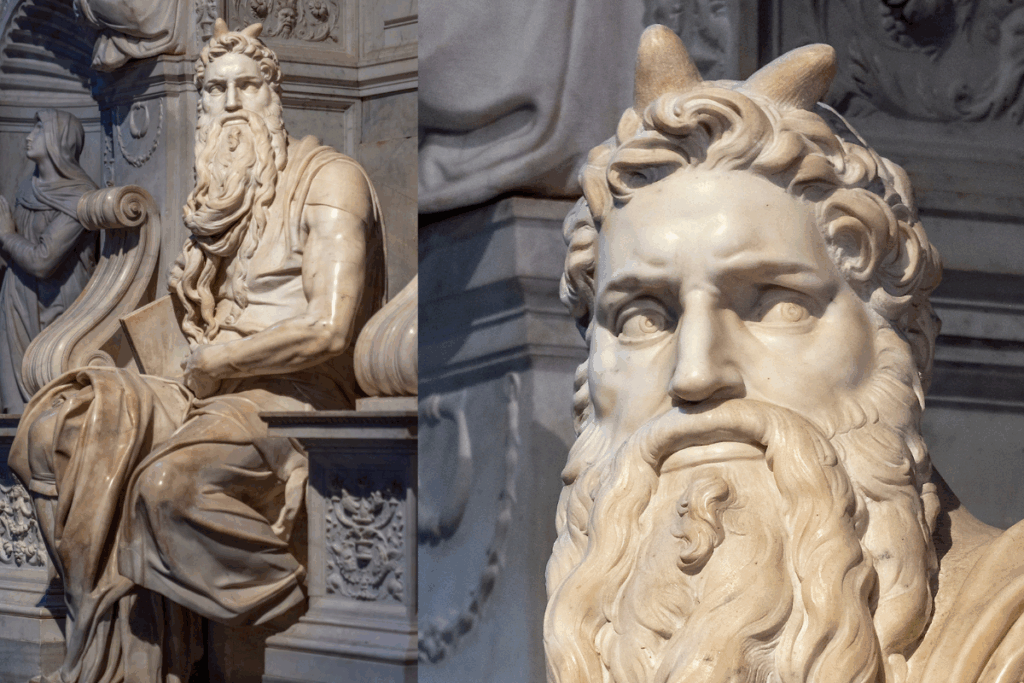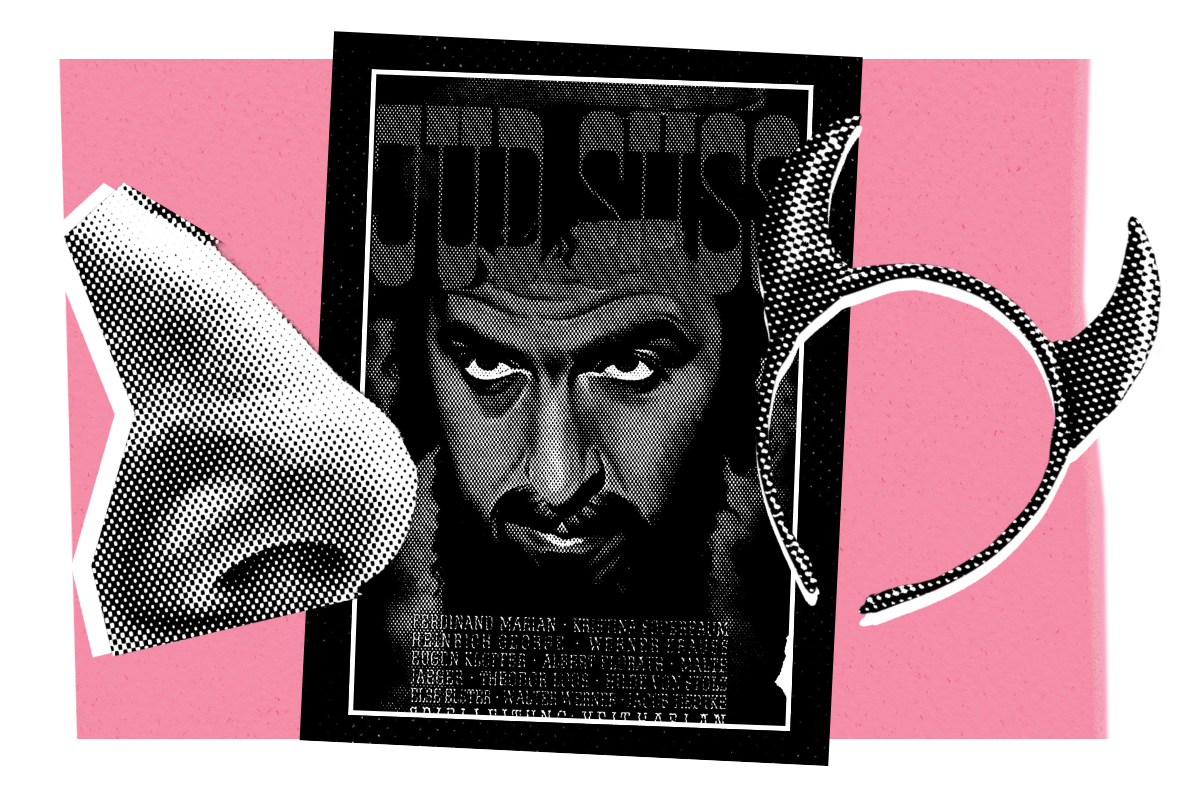Looks
What are the antisemitic tropes about how Jews look?
Back to: Hey Alma’s Guide to AntisemitismQuick! Picture a Jewish person! You may have a certain image come to mind. And that certain image has been cultivated, projected and used by politicians, conspiracy theorists and generally hateful people for hundreds of years.
TL;DR: HORNS / Noses / Jewish looks & The NAZIS / BODY TYPE
Before we get into that, I have a question.
Is it about the horns?
Yes! What is that? Why do people think Jews have horns?
OK, well, apparently this misconception comes from the Book of Exodus in the bible, which describes Moses descending from Mount Sinai after receiving the Ten Commandments. The Hebrew phrase reads “karan or panav,” which is best translated as “the skin of his face radiated.” But the verb “radiated,” karan, is nearly identical to the noun keren, which means horn. (Remember: Hebrew is written without vowels, so keren and karan look identical.)
Scholars believe this verse was first mistranslated in the Vulgate, a late 4th-century Latin translation of the Hebrew Bible, which says that Moses was “horned” (some believe it was less a mistranslation and more a genuine conviction that Moses had horns).
And so, in the Middle Ages, depictions by artists like Michelangelo would show Jews with horns and — well, it took off from there.

I see. OK, and what about Jews and big, hooked noses?
I mean, some of us are the proud possessors of a healthy schnoz. But this stereotype really took off in the 19th century. The anthropologist Robert Knox wrote in 1850 that Jewish features include “a large, massive, club-shaped, hooked nose, three or four times larger than suits the face… Thus it is that the Jewish face never can [be], and never is, perfectly beautiful.”
In the 1900s, ostensibly scientific papers would write about the “Jew nose,” and some doctors argued that plastic surgery to correct such noses could improve a patient’s well-being. However, American anthropologist Harry L. Shapiro countered that though the “convex profile with a depressed nasal tip is not infrequent among Jews, this is not surprising since the same nasal character is common enough in the general region from which they originate, not to mention that it also occurs in non-Jewish European people.”
So some Jews have prominent noses and some don’t?
Yes. But to be clear, the idea wasn’t only that Jews have prominent noses, but that Jews have prominent noses and also that it makes them less attractive. And this was, of course, used not only by plastic surgeons but by political movements, too.
Don’t tell me the Nazis.
I’m afraid so. Nazis obviously had a certain idea of beauty: blonde haired, blue eyed, athletic, thin, and, for women, soft and maternal. But images also presented the antithesis of these ideals in their representations of Jews. In the propaganda outlet Der Sturmer and the 1940 film “The Eternal Jew,” Jews were shown with cartoonish noses and as generally vile beings. The point was to dehumanize and otherize.

Is this still done today?
Yeah, it is. When Sen. Jon Ossoff, who is Jewish, was running for Senate in 2020, a digital ad by his opponent, Sen. David Perdue, showed Ossoff with an enlarged nose (Perdue’s campaign claimed this was an unintentional error by an outside editor). Again, the idea is to dehumanize Jews and render them as other, as irredeemable, as an appropriate target of contempt. But it does something else, too.
What’s that?
This probably isn’t the first order of business for antisemites, but hateful tropes about how Jews look — big noses, big hair, etc. — can be harmful within Jewish communities. They tend to be about one very stereotypical, Ashkenazi version of what Jews look like. But Jews don’t look any one way. And in the United States, as the fabric and composition of Jewishness continues to change, it’s important to remember that not only are antisemites making fun of Jewish features, but they’re flat out wrong: There’s no such thing, really, as “Jewish features.” That goes for body type, too.
Are there antisemitic tropes about body type?
Yes. Jewish women, in addition to the midcentury stereotype of being demanding and materialistic, are often shown as being zaftig or too fleshy and voluptuous or, alternatively, cold and un-sexual (the latter often came in the form of midcentury jokes from Jewish men, trying to make sense of their own identities in America at the expense of Jewish women).
Meanwhile, for men, there’s a certain cliche about weak, wimpy, effeminate Jews. Sometimes this was promoted as hateful propaganda, and sometimes as a Hollywood joke. Some of you may recall the gag in “Airplane!” in which the stewardess hands out a pamphlet on Jewish sports legends in response to a request for light reading.
But it was also internalized as an intra-Jewish stereotype: Some promoters of the Zionist movement also promoted the idea of the “new Jew,” contrasting the strong sabra Israeli to the weak diaspora Jew. But antisemites put enough of their hang ups on Jewish bodies and faces on us. We don’t need to put it on ourselves.
